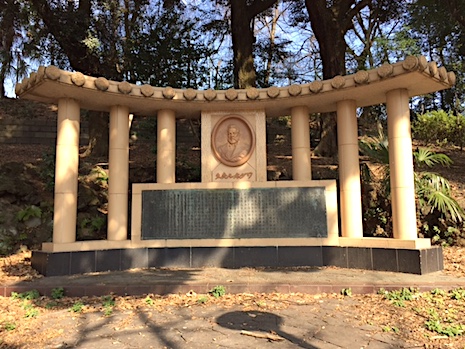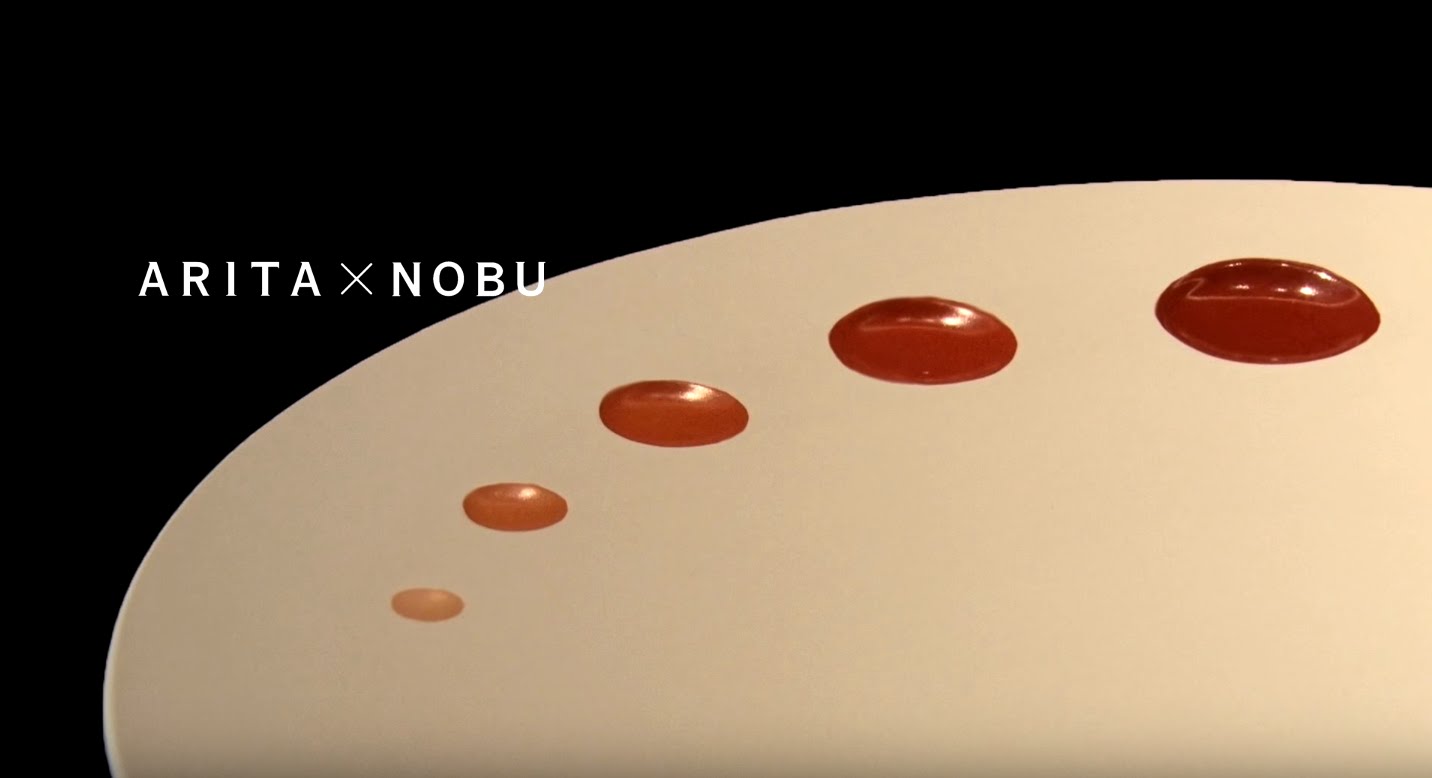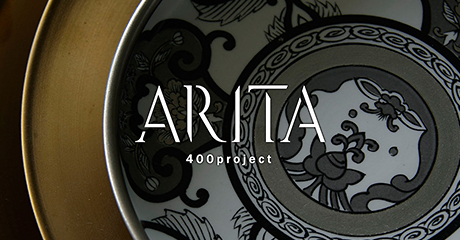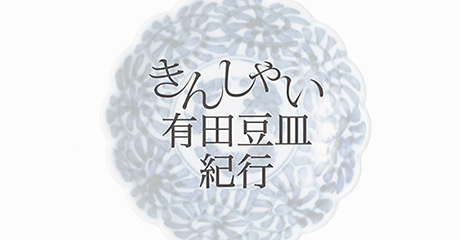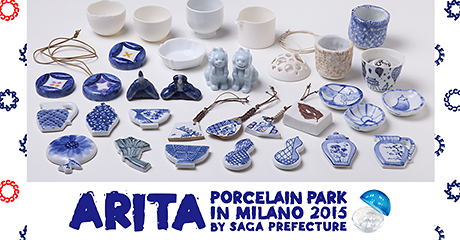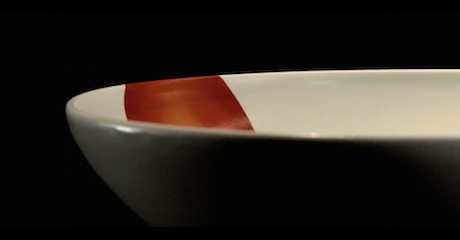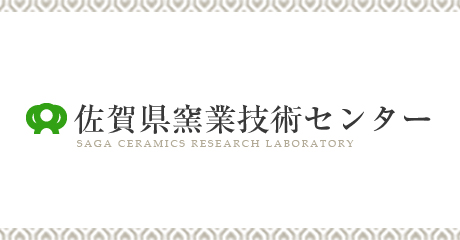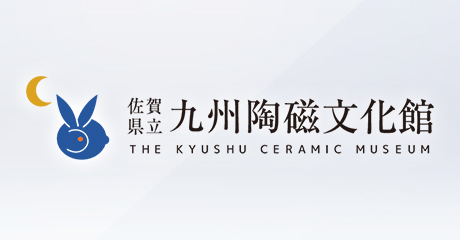1869: The return of political power to the Emperor, the abolition of the feudal domains and establishment of prefectures: at that time, Wagener was visiting Arita
With a production value of 2.5 trillion yen, Japan's ceramics industry accounts for 40% of the world market, as well as leading the world with its advanced technologies. It has been developing in various directions - from traditional crafts produced by a list of living national treasures to fine ceramics with new functions and features that are produced by highly controlled manufacturing processes; this is unique in the materials industry sector.*1
It is nearly 150 years since a German chemist Gottfried Wagener visited Arita. He is recognized as a 'foster parent' of the modern ceramics industry in Japan. He contributed greatly in the modernization of the industry, and is considered to be one of the most important people in the history of ceramics technology. The fact that Wagener was adored and respected everywhere he went is apparent in the monuments and statues that were built to commemorate his accomplishment. They can be found in three locations in Japan: Tokyo Institute of Technology (then Tokyo Vocational School), Kyoto Prefectural Library and Arita station.
If Wagener had not discovered Arita porcelain in Nagasaki and had not decided to visit the production centers, the ceramics industry might not have developed in the same way as is has done.*2 *3
Wagener was born in Hanover, Germany, in 1831. He received a doctor's degree from the University of Goettingen at the young age of 21. After spending his time as a private language tutor, a teacher at an engineering college in Switzerland, and so on, Wagener came to Nagasaki when he was 36. His aim was to establish a soap factory, following advice from an American entrepreneur John Walsh.
He arrived in Nagasaki in May 1868, a year after the restoration of imperial rule in which the Edo shogunate returned the political power to the Emperor. In the meantime in his home country Germany, the North German Confederation had just been established, and a war between Prussia, which played the central role in the confederation, and France governed by Napoleon III had broken out (Franco-Prussian War). It was a time of significant political changes in Europe, and significant numbers of people left their country due to political reasons. Wagener is considered to be one such person.
His attempt to make a fresh start in Nagasaki, however, was not successful. His soap business did not take off, and the following year, 1869, he became an employee of the Wald Trading Company in Nagasaki. That was when Wagener encountered Arita porcelain. His job at the Wald Trading Company was to purchase porcelain products for export from the Nagasaki Trading Company. He also seemed to be engaged in a sort of quality inspection by using his knowledge of physics and chemistry.

As he learned more about Arita porcelain, Wagener became more and more fascinated with it; and so he asked an official of the Nagasaki Trading Company to 'bring some people with passion for porcelain from Arita'. Following this, with the permission of Hyakutake Sakuemon (Sakuju), the governor of the Arita county in the Saga domain, akae (multi-colored overglaze) specialist Nishiyama Magoichi and a potter Yamaguchi Daijiro visited Wagener's laboratory in Nagasaki. In his laboratory, Wagener demonstrated how to dissolve gold in aqua regia (a liquid mixture of 3 parts nitric acid to 1 part hydrochloric acid), as well as teaching a method to use coal as fuel instead of firewood and charcoal, which tended to be in short supply.
Through the interaction with the people of Arita, Wagener's passion for Arita porcelain became even stronger, and he insisted that he absolutely needed to visit the production center. In those days, foreigners were still not allowed to travel freely within Japan. It was an unstable time: the samurai class, who were demanding expulsion of foreigners and who were filled with hatred against foreigners, were hiding across the country, and foreigners could be ambushed by them at any moment.
Despite all the difficulties, however, Wagener's request was passed to the lord of Saga domain, Nabeshima Naomasa, through Hyakutake, and was readily accepted. As the Saga domain was encouraging new industries at that time, such a request from someone who had advanced knowledge of physics and chemistry, like Wagener, was a 'heaven-sent' opportunity. Ever since the participation in the Paris World Exposition in 1867, people involved in the ceramics industry were trying to reproduce the vivid colors of European porcelain with Arita porcelain, but struggling. Although there were craftsmen with the highest skills to paint beautiful illustrations in Japan, there was nobody who had enough scientific knowledge to reproduce the colors of the European porcelain.
Wagener stayed in Arita from late April to early August in 1870. Despite his short stay of less than four months, he conducted numerous experiments with young ceramic artists, including Tsuji Katsuzo, Fukaumi Suminosuke and his brother Takeji, contributing greatly to the development of Arita porcelain.*4
Wagener made three major achievements: 1) the use of cobalt pigment; 2) the study of glaze, and 3) the development of coal kilns. All of these techniques were critical for manufacturing competitive products. Amid the dynamic social economic changes, the competition between the domestic and international porcelain production centers was becoming severe, and in order for Arita porcelain to survive in the pottery industry it was necessary to adopt all kinds of technical innovations.
At that time, expensive gosu (cobalt pigment) was imported from China to produce sometsuke (blue and white) porcelain. Wagener taught the people of Arita that the cost could be reduced significantly by using industrially manufactured cobalt pigment. He also conducted various experiments of glaze and analyzed the scientific composition of the glaze that was used in Arita in those days, which contributed to the reduction of cost and the improvement of reproducibility.
In addition, he tried to produce porcelain by using a coal kiln, which is more suitable for mass production as it cost less than using firewood or charcoal. The use of firewood and charcoal was not a problem as long as the mountains and forests were properly managed by the domain; however, if the management became inadequate, due to the abolition of the feudal domains and establishment of prefectures, it could lead to deforestation, and as a result the risk of disasters such as landslides would be increased. On the other hand, there were a lot of coal mines across Kyushu, including the Saga domain, and it was known that coal was easily obtained.
The experiment of firing potteries using Wagener's prototype coal kiln was not successful on this occasion; however, Wagener's experiment methods and inquisitive scientific spirit were passed down through the pottery industry in Arita. In 1909, about 40 years after Wagener's first visit, Fukagawa Eizaemon and others, who were influenced by Wagener, constructed a full-fledged coal kiln in the factory of Koransha. Compared to a climbing kiln that uses firewood and charcoal, a coal kiln could save more than 30% of the fuel cost, and it was extremely useful for the manufacturing of insulators, which are used as parts for electric cables.*5
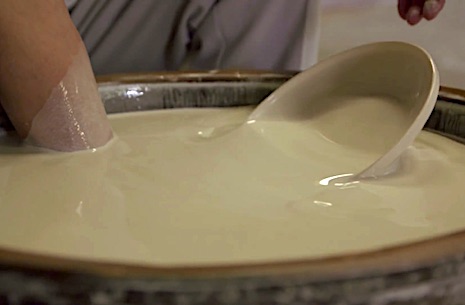
Now we go back to 1870. When the contract with Wagener expired in August, the county governor Hyakutake, of the Saga domain, tried to make a new long-term contract with him; however, due to the abolition of the feudal domains and establishment of prefectures, Hyakutake was dismissed from his post, and therefore the contract was not concluded.*6
After leaving Arita, Wagener was employed by Daigaku Nanko (Kaisei School, the predecessor of the University of Tokyo). From then on, he was engaged in science education in Japan until he died at the age of 62. In the Vienna World Exposition (1873) and the Philadelphia Centennial Exposition (1876), he played the role of an ambassador to introduce Japan to the West. He also dedicated himself to helping Japanese craftsmen who traveled to Europe to learn advanced techniques.*7
Even after leaving Arita, Wagener continued his study of the ceramics industry with his students, which contributed to ceramics production not only in Arita but also throughout Japan. He died at his residence in Surugadai, Tokyo, in November 1892, and was buried at Aoyama Cemetery according to his will. There were still a lot of people who admired Wagener even after his death, who eagerly wanted to pass down his achievements to the later generations. In 1937, 203 original members of the Late Dr. Wagener Memorial Project Association built a monument at the Tokyo Institute of Technology, the establishment of which Wagener was involved in.
When he was not giving lectures at the institute, Wagener would visit porcelain production centers to study the scientific composition of the ceramics. When the institute did not have a budget to employ an assistant, he would employ one at his expense. His deep devotion made a strong influence on many Japanese people. Kasai Shinzo who established Onoda Cement, the first private cement company in Japan, stated "there seems to be no clear lines between ceramics and Dr. Wagener - as if these two things are one thing," which suggest Wagener's passion for ceramics. Kasai studied in Germany, following the advice from Wagener. He described how he was touched by Wagener's warm kindness in choosing the destination for study and in giving guidance before traveling abroad.*8
Since the birth of porcelain in the 17th century, the ceramics industry in Japan has been leading the world to the present day in the 21st century: this is a rare phenomenon in an industrial history. Usually, as advanced technologies become widely available, old-fashioned industries would be forced to decline. If the ceramics industry had missed the opportunity for modernization at the beginning of the Meiji Period, it could have declined and disappeared as a relic of the past.
Wagener taught young ceramic artists and owners of potteries how to reduce production costs, from the perspective of their competitiveness against Europe and America. This was crucial for Arita porcelain to survive through the Meiji and Taisho Periods. It would not have happened if Wagener were merely a "dilettante" who only appreciated the aesthetic of traditional Japanese crafts.
Or, if he were a "merchant" who was only interested in the short-term business profit, the ceramics industry in Arita and Japan would not have developed. In any business activities, if a higher priority is given to the immediate profit than any other values, there would be no space for new challenges, discovery and creation; and eventually the business would diminish.
Furthermore, Wagener was different from most "employed foreigners" who were employed by the Meiji Government*9. Wagener highly valued the artistic quality of the traditional Japanese crafts, and said that it would form the foundation of Japan's industrial competitiveness, which Europeans and Americans could never replicate. He explained that manufacturing cheap, similar products was not enough, and Japan would soon be pushed out from the market, once the Western companies with large capitals invested into their facilities. He insisted that Japan should utilize and improve its artistic quality so as to attract people despite their cultural and civilizational differences. In addition, he seemed to think that Japan's unique artistic quality was a fruit of aesthetic consciousness that had been cultivated through its traditions and life styles, and therefore the identity of Japanese people should be respected in order to improve such quality.
One of the Wagener's students, Doctor of Engineering Iwata Nakazawa, based in Kyoto, left a great heritage as a leading figure in the Arts and Crafts Association. He read the following poem, thinking of Wagener.
We should not regard Dr. Wagener as a foreigner, for his devotion is for our country
Our gracious mentor, we shall follow your way for ever and ever, like a pure stream toward prosperity*10
The poem reflects the personality of Wagener and his influence on later generations.
Due to the political system changes from the Edo to Meiji Periods, the social economy significantly changed; in such a turbulent time, there was a danger that Arita-Sarama remained unchanged and became a relic of the past. However, people of Arita learned a lot from Wagener and developed their business into a competitive industry. Looking back through its history, Arita porcelain had always adopted techniques and culture from the Korean Peninsula and China since the early days of porcelain. It was also exposed to the aesthetic consciousness of Europe through trade with the Netherlands. Such experience of adopting different cultures is considered to build the foundation for modernization.
Throughout its history, Arita porcelain had encountered various different cultures, which created opportunities for it to develop further. It is 400 years since the birth of Japan's first porcelain, and there is a growing expectation for new innovations to pave a way for the next 100 and 200 years based on previous experiences. In order to realize this, accommodating both admiration for the Japanese aesthetic sense and scientific exploration, like Wagener did throughout his life, is likely to be important.
-
*1 Tomosaburo Yano (Japan Fine Ceramics Association, Executive Director), "The Current Status and the Future of the Ceramics Industry Inside and Outside Japan" 2016, Mie Prefecture Study Group for Production Technology, Evaluation and Analysis
According to "2015 Research on the Trends in the Fine Ceramics Industry" by the Japan Fine Ceramics Association, it was 2 trillion 451 billion yen (fiscal year 2015). - *2 Kenichi Hashimoto, "On the 100 Year Anniversary of the Arrival of Wagener," "Ceramics" 3[7] 1968, The Ceramic Society of Japan
- *3 Shinichi Terauchi, "Miscellaneous Notes on Arita-Sarayama" 1930
- *4 Michio Yorita, "The Technical Guidance on Ceramics by Wagener in Arita, Saga domain, and its Significance," "Memoirs of the Faculty of Education, Kagawa University. Part I" No. 83, 1991
- *5 Setsuo Sato, "Life of Dr Wagener and Japan in the Early Meiji Period (1) - (5)," "Tosetsu" 1988, Japan Ceramics Society
- *6 Committee on Historical Studies of Arita Town, "History of Arita Town: Ceramics I" 1985, Arita Town
- *7 Hokitsu Ueda, "Biography of Dr. Gottfried Wagener" 1925, Exposition Publishing Association
- *8 Shinzo Kasai, "How Dr. Wagener's Education Influenced the Later Generations," "A Collection of Memoirs of Dr. Wagener" 1938, Late Dr. Wagener Memorial Project Association
-
*9 "Reference: Employed Foreigners" edited by the Centre for East Asian Cultural Studies, 1975, Shogakukan
In order to learn advanced techniques from the West, the government employed a number of European and American people. The number of employees totaled to 2690 in 22 years from 1868 to 1889. A lot of them had contempt for Japan, as it was an underdeveloped country. Most of them returned to their countries once their contract had expired. - *10 Iwata Nakazawa, "The First Phase of Dr. Wagener's Visit to Japan," "A Collection of Memoirs of Dr. Wagener" 1938, Late Dr. Wagener Memorial Project Association
